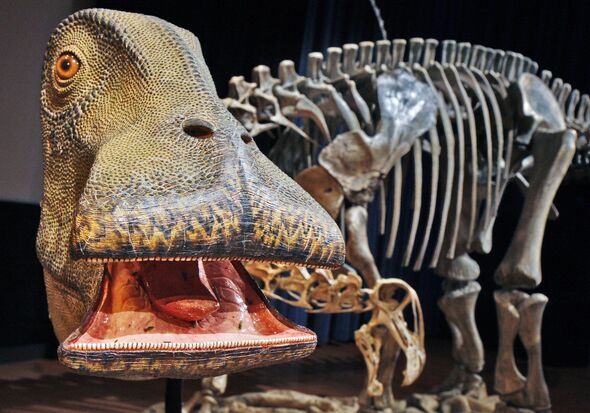110 million years ago, the bizarre Nigersaurus walked the lush environment in what is now Niger’s Sahara Desert. It was a 30-foot-long plant-eating dinosaur, with a delicate skull and an extremely wide mouth with 500 teeth, replaceable more often than any other genus of dinosaur.
It lived during the middle Cretaceous period and was discovered in the Elrhaz Formation in an area called Gadoufaoua in Niger, Africa.
Fossils were first described in 1976, but it was only named Nigersaurus taqueti in 1999, after further and more complete remains were found and described.
The genus name means “Niger reptile” and the specific name honours the palaeontologist Philippe Taquet, who discovered the first remains.
Small for a sauropod – marked by a large size, a long neck and tail, a four-legged stance and a herbivorous diet – Nigersaurus was about nine metres long and had a weight similar to the modern elephant.
It had a wide muzzle, with teeth that were replaced at a rapid rate – around every 14 days. Unlike other tetrapods – all backboned animals including reptiles, amphibians and mammals – the tooth-bearing bones of its jaws were rotated transversely relative to the rest of the skull, so that all of its teeth were located far to the front.
There has been debate on whether its head was habitually held downwards, or horizontally like other sauropods.
Thanks to its specially adapted teeth to allow for the browsing plants close to the ground, the Nigersaurus lived in a riparian habitat and its diet probably consisted of soft plants such as ferns, horsetails and angiosperms – plants which bear flowers and fruits.
Remains thought to belong to the Nigersaurus were first discovered during a 1965-72 expedition to the Republic of Niger led by Taquet and were first mentioned in a paper published in 1976. Although a common genus, the dinosaur had been poorly known until more material was discovered during expeditions led by American palaeontologist Paul Sereno in 1997 and 2000.
In a journal entry from September 2000, Sereno wrote: “Remarkable discoveries seem to be waiting for us around every dune. On our first day, we found bones of the long-necked dinosaur Nigersaurus.
“A major goal of this expedition is to find the rest of this unusual dinosaur so we can describe it and reconstruct it for everyone to see… We are closing in on that goal fast because we came upon a skeleton a few days later! This skeleton is lying on its side with the tail curved upward.
“But that’s not all for Nigersaurus. Chris took us all to a flat area of purple-colored sandstone where he had located the upper jaw of a baby Nigersaurus—one that would fit on top of a silver dollar! This Nigersaurus was a hatchling, probably less than one year from hatching when it died and was fossilized.”
The limited understanding was the result of poor preservation of its remains, due to the delicate and highly pneumatic construction (filled with air spaces connected to air sacs) of the skull and skeleton, in turn causing a break up of the fossils. Some of the fossil skulls were so thin that a strong light beam was visible through them.
As a result, no intact skulls or articulated skeletons have been found.
